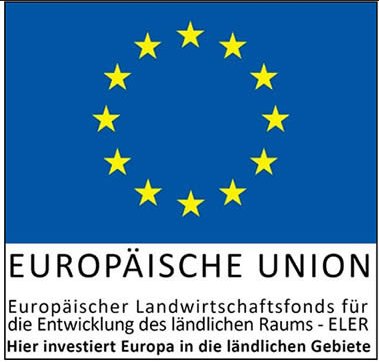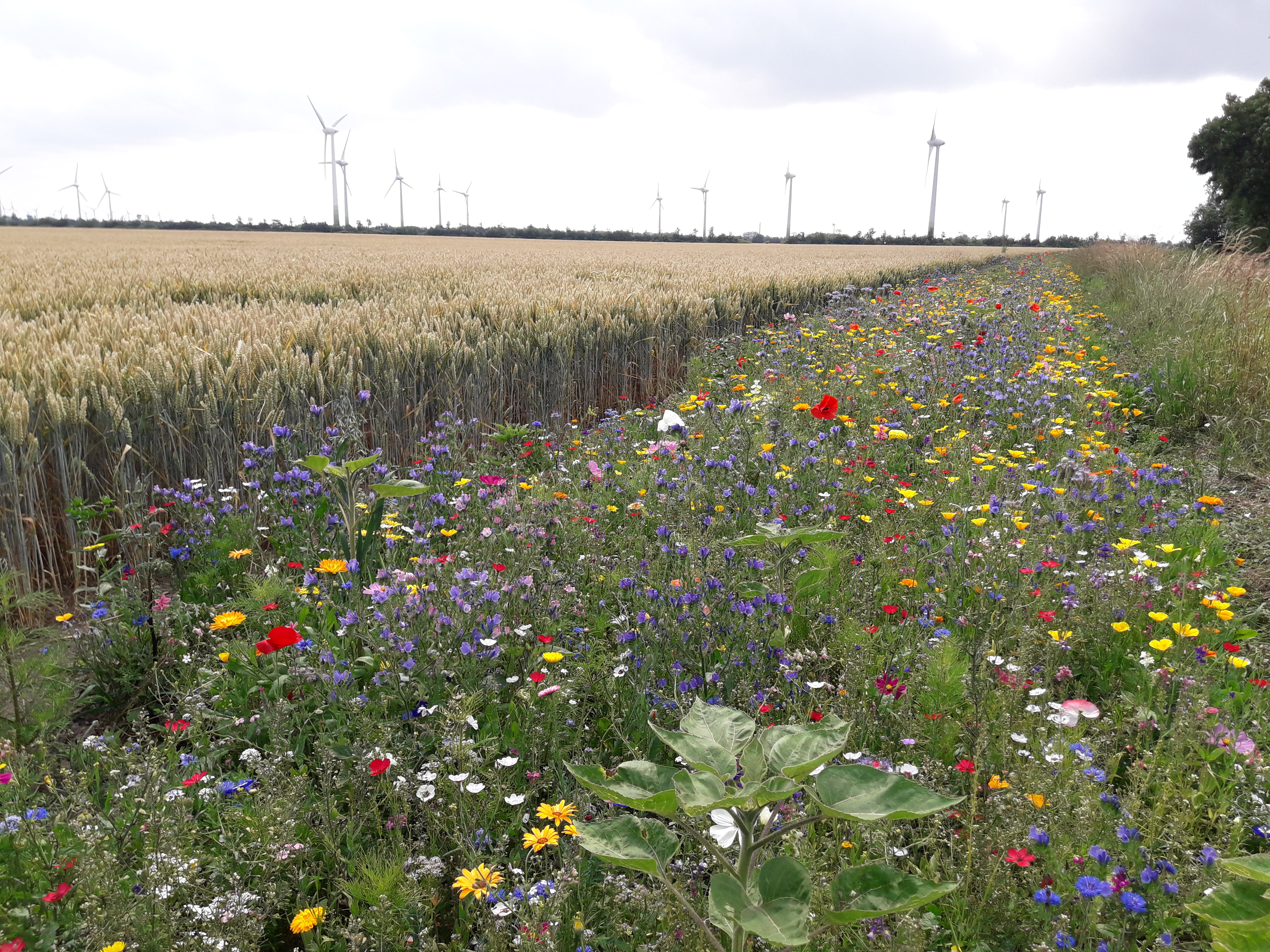Climate resilience
Climate resilience in agriculture means strengthening the resilience of farms to the effects of climate change. This includes measures such as the introduction of diverse crop rotations, the cultivation of resistant plant varieties and the use of efficient irrigation systems. Intercropping improves soil quality and reduces erosion. In addition, sustainable farming practices and innovative technologies help to stabilize crop yields and ensure long-term sustainability. Such adaptation strategies are crucial to ensure agricultural productivity and food security in times of increasing climatic challenges. We are committed to this responsibility and often contribute above and beyond the minimum requirements.
Promotion of environmental and climate protection measures
As part of the EAFRD, the European Agricultural Fund for Rural Development, we receive funding to improve soil quality and increase biodiversity in rural areas.

Water protection
Water protection in agriculture is crucial in order to maintain water quality and avoid pollution. Here are some important distance regulations and requirements that we as agricultural businesses must comply with:
- Watercourse buffer strips: buffer zones must be established along watercourses. These buffer strips, which are generally at least 5 to 10 meters wide, must not be used for agricultural purposes in order to prevent nutrients and pesticides from entering the water.
- Fertilizers and pesticides: The application of fertilizers and pesticides near bodies of water is strictly regulated. Minimum distances must be maintained to prevent direct entry into water bodies. These distances can vary depending on the type of chemical and local regulations, but are usually at least 3 to 10 meters.
Fertilizer Ordinance
The Fertilizer Ordinance(DüV) aims to protect the environment from harmful nutrient inputs and improve water quality, in particular by reducing nitrate and phosphate levels in groundwater and surface water. In order to achieve these goals, the DüV sets out various requirements for agriculture, including precise specifications for nutrient balancing, time and quantity restrictions on fertilizer application, mandatory soil testing and record-keeping obligations. These measures are intended to ensure the environmentally friendly and efficient use of nutrients and minimize water pollution.
Red areas
The "red areas" are areas that are classified as particularly contaminated with nitrate in accordance with the Fertilizer Ordinance. Stricter requirements for agriculture apply in these areas, including stricter fertilizer rules and additional measures to reduce nitrate pollution in groundwater. The requirements in the "red areas" according to the Fertilizer Ordinance include
- Fertilizer quantity limits: stricter limits apply to the maximum amount of fertilizer permitted per hectare of agricultural land in order to prevent over-fertilization.
- Nutrient balancing: Farmers must keep a detailed nutrient balance that documents the input and application of nitrogen and phosphorus. This serves to monitor and control nutrient losses.
- Closure periods: There are fixed periods during which fertilization is suspended due to weather conditions and to prevent nutrient leaching (e.g. winter months).
- Prohibitionof fertilization in certain protected areas: In sensitive areas such as water protection areas or flood plains, certain fertilization measures are completely or partially prohibited.
- Compulsory soil testing: Regular soil testing is mandatory in order to monitor the nutrient content in the soil and adjust fertilization accordingly.
Integrated crop protection
Integrated pest management is a comprehensive strategy for the effective control of plant diseases, pests and weeds. It combines preventative measures such as the use of resistant varieties and crop rotations with targeted applications of chemical, biological and cultural control methods. The aim is to minimize environmental pollution and at the same time promote sustainable and economically viable solutions in plant protection.
Circular economy
The agricultural circular economy is a concept based on using all processes and resources within a farm as efficiently as possible, creating a closed cycle. This includes the recycling of organic materials such as crop residues and animal excrement through composting and mulching. The aim is to return these resources to the soil as natural fertilizer in order to maintain and improve soil fertility. Integrating plant and animal production in a synergistic system not only reduces the amount of waste, but also reduces dependence on external inputs such as chemical fertilizers and pesticides. This contributes to the sustainability of agricultural practices by minimizing ecological impacts and promoting the long-term productivity and health of the agricultural system.



